Health
Americans breathe in carcinogenic chemicals found in cars: study

Researchers have found that a source of carcinogenic chemicals is in Americans’ cars – but there may be a way to reduce your risk.
Environmental Science and Technology, a peer-reviewed scientific journal, published a study called “Flame Retardant Exposure in Vehicles Is Influenced by Use in Seat Foam and Temperature” on Tuesday.
The study explains that Americans breathe in chemicals from the flame retardants in their vehicles. The chemicals can cause issues ranging from developmental neurotoxicity to thyroid hormone dysregulation and even cancer.
The types of chemicals found in flame retardants range from polybrominated diphenyl ethers (PBDEs), which were common in cars until the early 2000s, to alternative brominated flame retardants (BFRs) and organophosphate ester flame retardants (OPEs).
STUDY FINDS EVIDENCE OF MICROPLASTICS IN BRAINS AND OTHER ORGANS
Interior detail of an electric car, taken on August 4, 2015. (Neil Godwin/T3 Magazine/Future via Getty Images)
The federal government requires a level of flame retardants in vehicles. The National Highway Traffic Safety Administration (NHTSA) mandated the use of flame retardants in the 1970s.
“Flame retardant (FR) chemicals are intentionally used in electronics, furnishings, and building materials to meet flammability standards,” the study explains.
STD RATES SKYROCKET AMONG AMERICANS 55 AND OLDER: CDC
“Most [flame retardants] are used in an additive manner (i.e., not chemically bound), and many are semivolatile, indicating that they can be present in both the gas phase and partially in the condensed phase (e.g., particles and surfaces), depending on environmental conditions.”

A motorcycle officer weaves through traffic on a Los Angeles freeway during the evening rush hour on April 12, 2023 in Los Angeles, California. (FREDERIC J. BROWN/AFP via Getty Images)
Americans who drive professionally or face long commutes may be at a higher risk of harm from the chemicals.
“These findings highlight that commuters are likely to be exposed to [flame retardants], especially those with longer commutes or those who drive vehicles full time as part of their employment,” the paper read.
“In addition, children, who breathe a greater amount of air per kg body weight compared to adults, would also be at risk of greater exposures for equivalent commuting times.”
CLICK HERE TO SIGN UP FOR OUR HEALTH NEWSLETTER

An interior view of a vehicle on April 2, 2024 in Beijing, China (VCG/VCG via Getty Images)
Drivers and passengers in warmer states may face a greater risk of breathing in the flame retardant chemicals. But rolling down car windows, turning off the AC and parking in covered garages may help reduce exposure to the dangerous chemicals, researchers say.
“Increasing ventilation by opening vehicle windows and avoiding recirculating interior cabin air may also reduce exposures,” the study said. “However, the greatest reduction in exposure from vehicle air would come from significantly reducing the amount of FRs added to personal vehicles.”
For more Health articles, visit www.foxnews.com/health.

Health
Michigan mom: ‘I had a stroke at 39 — and the warning signs weren’t what you’d expect’
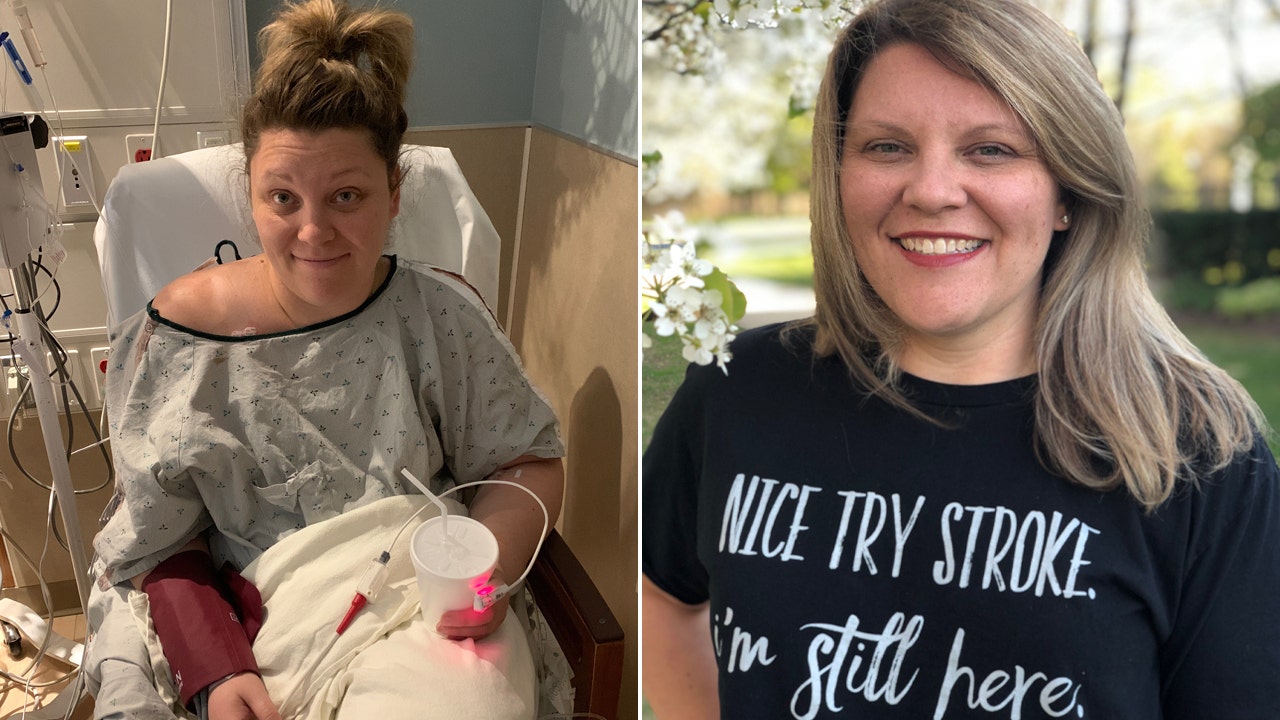
Jenna Gibson was just 39 when she was training for a marathon five years ago — but her plans were cut short by a stroke that almost took her life.
Nearly 60% of stroke deaths occur in women, according to a recent study by Mayo Clinic — and now Gibson, a Michigan mother of two, aims to help others to be more aware and prioritize their health.
“Once I learned that strokes are happening to younger people, I had to share my story,” she told Fox News Digital.
5 WOMEN’S HEALTH TIPS TO PREVENT AND DETECT STROKES, ACCORDING TO CARDIOLOGISTS
“In most cases, strokes are preventable if you know what to look for.”
On the day of Gibson’s stroke, she was feeling great.
Jenna Gibson was just 39 years old when she was training for a marathon five years ago — but her plans were cut short by a stroke that nearly took her life. (Jenna Gibson)
It was a beautiful day, she’d nailed a presentation at work, and she was enjoying a walk outside with her mother after dinner.
“We were talking about how I was training for the Detroit marathon for my 40th birthday, and then all of a sudden, out of the blue, it felt like I was hit with a ton of bricks,” she told Fox News Digital.
DOG ALERTS FAMILY, SAVES TEXAS TEENAGER FROM LIFE-THREATENING STROKE: ‘KEEPING GUARD’
Gibson stopped walking, then suddenly fell over into the grass.
Her mother thought she was joking at first. “She actually took a picture of me lying in the grass, saying, ‘C’mon, get up, what are you doing?’”
“They could see there was a blockage on the left side of my brain, and I was actively having a stroke.”
Her mother helped her up, but Gibson couldn’t walk straight.
“I felt like I was drunk — something just wasn’t right,” she said.
Even so, Gibson did not experience any of the textbook symptoms of a stroke, such as the facial droop, severe headache or vision disturbances.

When Gibson first fell onto the grass, her mother thought she was joking — and snapped this picture. As it turned out, Gibson was in the early stages of having a stroke. (Jenna Gibson)
They made it back home, where Gibson assumed she was having a migraine. She took some headache medicine and went to bed.
“A couple of hours later, I woke up and still didn’t feel right — I couldn’t get out of bed, I couldn’t move,” she recalled.
TIAS AND MINI-STROKE RISKS: CARDIOLOGIST SHARES WARNING SIGNS AND PREVENTION TIPS
That’s when they headed to the emergency room. Gibson’s mother told the medical team that her daughter was having trouble walking and might be having a stroke.
“They checked me over, did all the tests, and didn’t see the typical signs that they would be looking for,” Gibson said. “Part of it was because I was young.”
“I could walk, although not very well. I could get some words out.”
She added, “I didn’t have the facial droop. I could walk, although not very well. I could get some words out.”
After a CT scan, the medical team decided that Gibson was likely having an optic migraine. The next morning, when she still wasn’t feeling right, the neurologist ordered another scan with contrast — and that time, the stroke finally showed up.
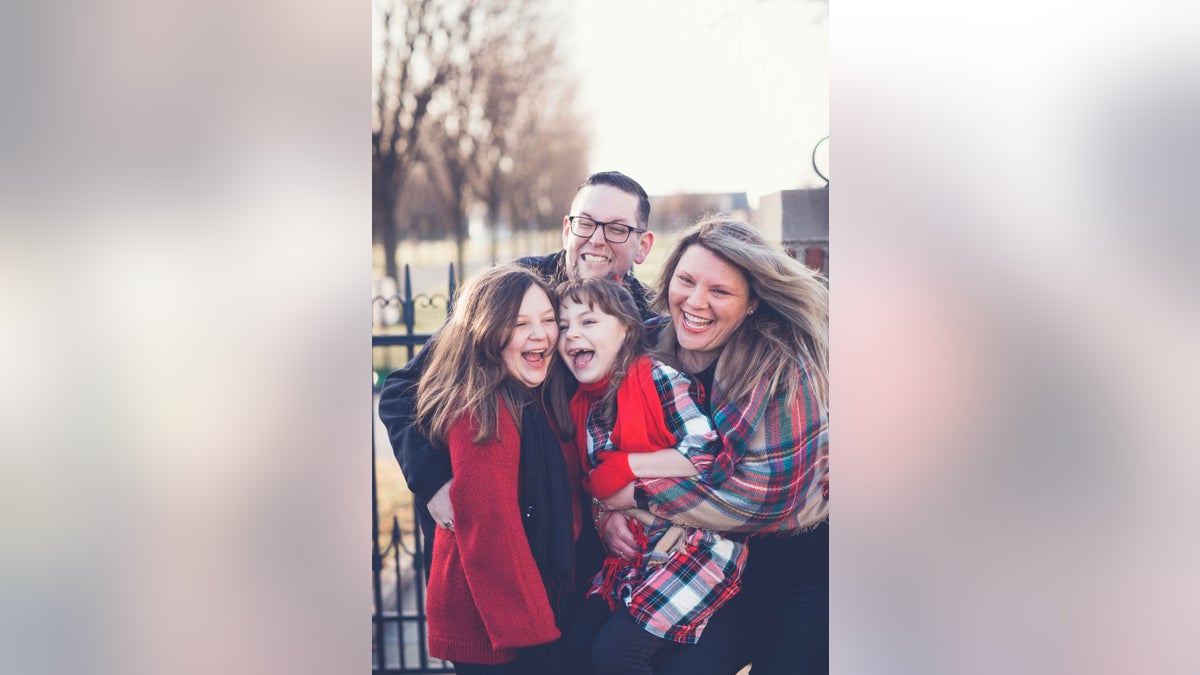
Gibson is pictured with her husband and two daughters, who were ages 8 and 4 at the time of her stroke in 2019. (Jenna Gibson)
“They could see that there was a blockage on the left side of my brain, and I was actively having a stroke,” she said.
Gibson was immediately airlifted to another hospital, where she had emergency brain surgery to remove the blood clot.
“There was obviously a risk of death — if we didn’t move fast enough, the time frame would be over,” she said.
HIGH BLOOD PRESSURE A CONCERN WORLDWIDE, LEADING TO DEATH, STROKE, HEART ATTACK: HOW TO STOP A ‘SILENT KILLER’
As she was flown to the hospital, Gibson said she felt certain she was going to die and would never again see her husband or her daughters, who were just 8 and 4 at the time.
“I thought I’d never get to see my children grow up and get married, or that I’d have to live in some kind of vegetative state and would never work again.”
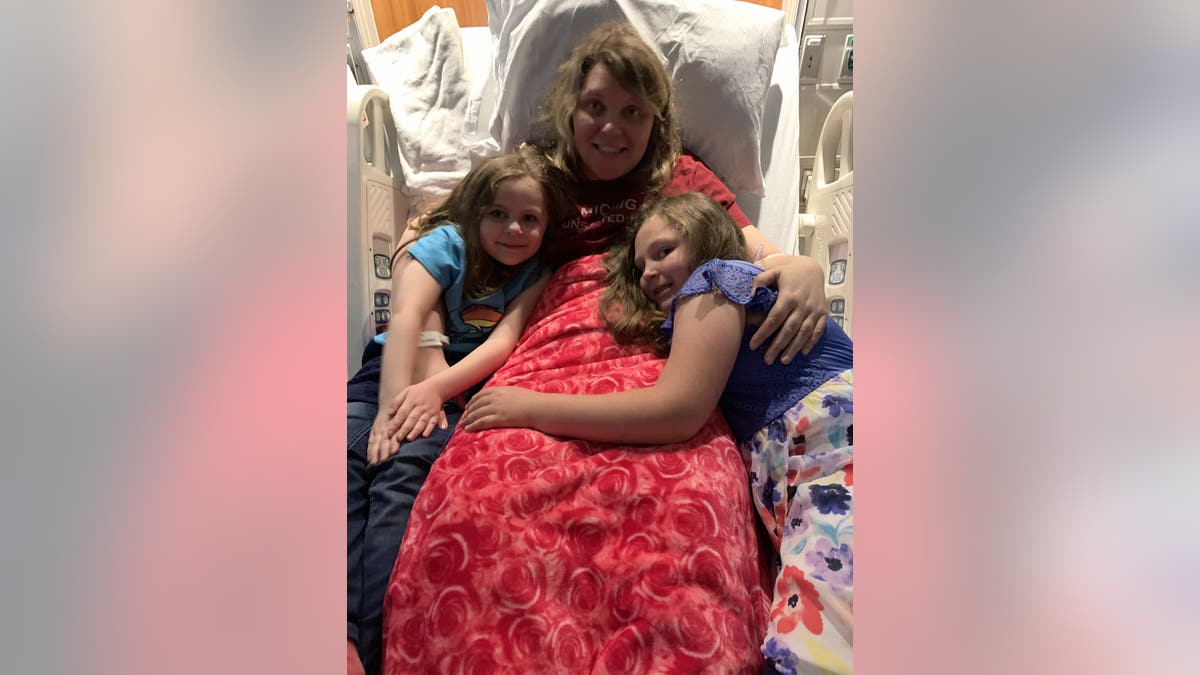
Gibson is pictured with her two daughters in the hospital after her stroke. Her first “assignment” was to tell her daughters that she loved them — and that “Mommy’s going to be OK.” (Jenna Gibson)
“I was thinking, ‘Did I tell my girls enough times that Mommy loves them? Does my husband know how proud I am of him?’”
The next thing she knew, Gibson was waking up from surgery in the ICU — and facing a long road to recovery.
“At first, I couldn’t speak at all. I couldn’t move my right side. I was trapped in my head — I could see what was happening and hear people asking me questions, but I couldn’t answer.”
‘By the grace of God’
Over the next few days, Gibson said her capabilities slowly started coming back.
She received speech therapy, occupational therapy and physical therapy — and over time began to regain movement on her right side.
REPORTS REVEAL THE RISK FOR STROKES IS ON THE RISE IN YOUNG ADULTS
Her first “assignment” was to tell her daughters that she loved them and that “Mommy’s going to be OK.”
After a couple of weeks, Gibson returned home and continued with outpatient therapy for three hours a day, three days a week for a four-month period.
“It was during the first six weeks that we saw the quickest improvement, and then after that, it was slower and slower,” she said.
“I had to relearn everything. And now, by the grace of God, I can do all the things.”
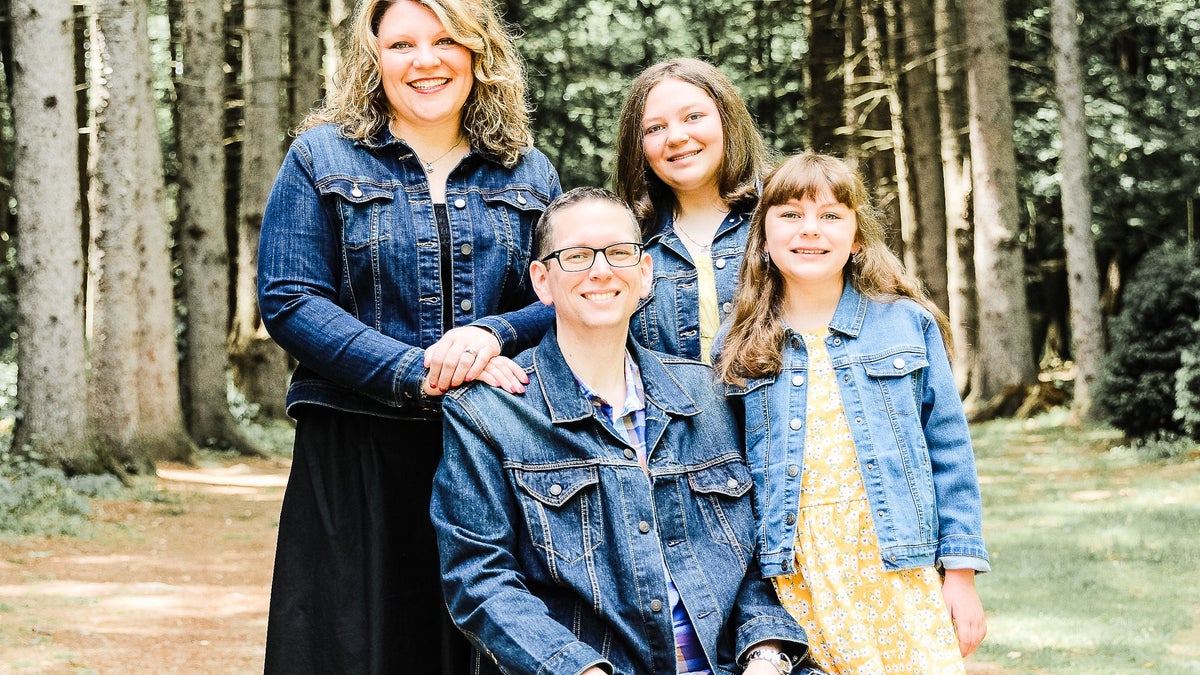
“I was thinking, ‘Did I tell my girls enough times that Mommy loves them? Does my husband know how proud I am of him?’” Gibson said about her stroke. She is pictured here with her husband and two daughters. (Jenna Gibson)
Today, Gibson is still completely numb on the entire right side of her body. She also still sometimes struggles with finding the right words while speaking, she said, especially when she’s tired or stressed.
“But if you saw me, I look like a normal person,” she said.
And in a full-circle moment, Gibson was finally able to complete the half-marathon last October.
‘Every second counts’
Dr. Annie Tsui, chief of neurology at Access TeleCare, who is based in Texas, emphasized the prevalence of strokes among women and urged awareness.
“Strokes can occur for various reasons across different age groups and genders,” Tsui, who was not involved in Gibson’s care, told Fox News Digital. “Even though strokes can occur at any age, women between the ages of 20 and 39 are at twice the risk compared to men.”
While the primary risk factors for stroke are high blood pressure, high cholesterol, heart disease, obesity and diabetes, the causes for strokes in younger age groups differ from those typically associated with older people, Tsui noted.

After her stroke was diagnosed, Gibson was airlifted to another hospital to get emergency brain surgery. (Jenna Gibson)
Those may include cardiac issues, blood clotting disorders, genetic predispositions, vascular abnormalities or trauma.
“Although no one is completely immune to the risk of stroke, individuals at higher risk should work with their doctor to develop a prevention plan,” Tsui advised. “In general, maintaining a healthy lifestyle is crucial, as up to 80% of strokes can be prevented.”
CLICK HERE TO SIGN UP FOR OUR HEALTH NEWSLETTER
It’s crucial to be aware of the symptoms to receive treatment as quickly as possible, according to Tsui.
She recommends using the FAST acronym, shown below, as a convenient tool for identifying stroke indicators.
- Face (drooping or numbness)
- Arm (weakness or numbness)
- Speech (slurring or difficulty speaking)
- T for time to call 911

Gibson underwent four months of intensive physical and occupational therapy during her recovery. (Jenna Gibson)
“The chances of survival and positive outcomes are highest when the patient receives prompt medical attention,” Tsui told Fox News Digital.
Some stroke treatments are only effective if administered within three hours of when symptoms begin, she warned — with the risk of permanent brain damage or death rising with each passing minute.
“It’s important to be vigilant in recognizing stroke symptoms and to seek medical assistance immediately at the first sign,” Tsui said.
“Every second counts in reducing the risk of brain injury, permanent disability or even death.”
For more Health articles, visit www.foxnews.com/health.
Health
Feeding peanuts to babies could prevent allergies through the teen years, study finds

Feeding peanut butter to babies — starting during infancy and continuing until age 5 — has been shown effective in reducing allergies into adolescence, according to a new study by King’s College London.
The LEAP-Trio study, published on Tuesday in NEJM Evidence, showed that children who consumed peanuts early in life were 71% less likely to develop peanut allergies all the way up to 13 years of age.
This was a follow-up to the Learning Early About Peanut Allergy (LEAP) clinical trial. The National Institute of Allergy and Infectious Diseases (NIAID) sponsored and co-funded both studies.
10 SURPRISING FACTS ABOUT PEANUT ALLERGIES, ACCORDING TO A PEDIATRIC IMMUNOLOGIST
In the original trial, half the participants were asked to consume peanuts regularly from infancy until age 5, while the other half were asked to avoid the food during that period.
Researchers found that early introduction of peanuts reduced the risk of peanut allergy at age 5 by 81%.
Feeding peanut butter to babies has shown to be effective in reducing allergies into adolescence, according to a new study. (iStock)
This latest trial included 508 participants from the original study, averaging 13 years of age.
The children were given peanuts in a “carefully controlled setting” to gauge any allergic reactions.
Peanut allergies were “significantly more prevalent” among the children who avoided peanuts in the first five years of life.
BABY SLEEP DANGERS REVEALED IN NEW STUDY AS NEARLY 70% OF INFANT DEATHS WERE DUE TO CO-SLEEPING
“Regular, early peanut consumption reduced the risk of peanut allergy in adolescence by 71% compared to early peanut avoidance,” the study authors wrote.
This effect persisted regardless of whether the children had eaten peanuts regularly or avoided them over a period of many years.
FDA APPROVES ALLERGY DRUG TO LESSEN SEVERITY OF REACTIONS TO PEANUTS, DAIRY, OTHER FOODS
“The key finding of this study is that early consumption of peanut, starting early in the first year of life, confers long-term protection against peanut allergy all the way into adolescence, even without continued consumption of peanut beyond the age of five years,” lead study investigator Gideon Lack, a professor at King’s College London, told Fox News Digital.

Children who consumed peanuts early in life were 71% less likely to develop peanut allergies all the way up to 13 years of age, researchers found. (iStock)
“This is the first study to establish long-term oral tolerance as a protective strategy against peanut allergy.”
To prevent peanut allergy, young babies as early as 4 months of age should be given peanuts in the form of peanut puffs or peanut butter “regularly and frequently” — at least three times a week — over the first four to five years of life, the researchers recommended.
GLUTEN-FREE LIFESTYLE: DEBUNKING MYTHS AND DECIDING IF THE DIET IS RIGHT FOR YOU
“I was not entirely surprised, but nevertheless impressed by the strong protective effect of early peanut consumption preventing peanut allergy all the way into adolescence,” Lack noted.
“This indicates that lifelong tolerance may have been achieved.”

“Early introduction of infant-safe peanut foods has been proven to help prevent peanut allergies, especially but not exclusively in infants at risk for peanut allergies,” a registered dietitian told Fox News Digital. (iStock)
Sherry Coleman Collins, a food allergy dietitian in Marietta, Georgia, was not involved in the study but shared her insights on the topic.
“Early introduction of infant-safe peanut foods has been proven to help prevent peanut allergies, especially but not exclusively in infants at risk for peanut allergies,” she told Fox News Digital.
“In this study, they found that even if children who ate peanut foods in infancy stopped eating peanuts for a period of time, they were still protected against developing a peanut allergy,” Collins continued.
CLICK HERE TO SIGN UP FOR OUR HEALTH NEWSLETTER
This supports the idea that tolerance to foods developed in infancy can extend into adolescence, according to Collins.
“Infants who have moderate to severe eczema and/or egg allergy should discuss early introduction of peanut foods to help prevent peanut allergies because they are at highest risk,” she advised.
“Infants who have moderate to severe eczema and/or egg allergy should discuss early introduction of peanut foods to help prevent allergies.”
The study did have some limitations, Lack acknowledged.
“One weakness of the study is that it was carried out in a high-risk population of babies with severe eczema or hens egg allergy,” he told Fox News Digital.
“However, the findings of the original LEAP study have now been replicated in other lower-risk normal populations and therefore are applicable to the general population.”
These findings could likely be effective for other types of food allergies, the researchers said.
For more Health articles, visit www.foxnews.com/health.
Health
How Adding Nuts to a Low-Carb Diet Boosts Mood and Burns Fat Faster: Breakthrough Study
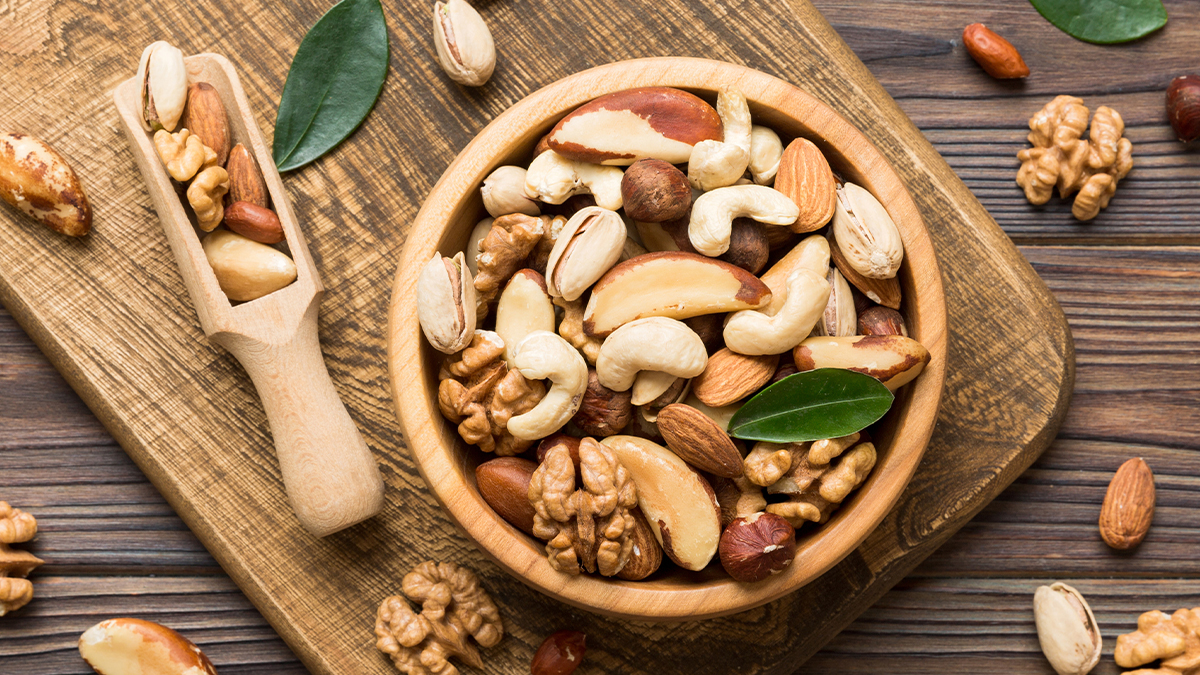
Sign Up
Create a free account to access exclusive content, play games, solve puzzles, test your pop-culture knowledge and receive special offers.
Already have an account? Login
Forgot your password?
Get back to the Sign In
Use left and right arrow keys to navigate between menu items.
Use escape to exit the menu.
-

 Movie Reviews1 week ago
Movie Reviews1 week ago‘The Substance’ Review: An Excellent Demi Moore Helps Sustain Coralie Fargeat’s Stylish but Redundant Body Horror
-

 Culture1 week ago
Culture1 week agoFrom Dairy Daddies to Trash Pandas: How branding creates fans for lower-league baseball teams
-

 Movie Reviews1 week ago
Movie Reviews1 week ago‘Rumours’ Review: Cate Blanchett and Alicia Vikander Play Clueless World Leaders in Guy Maddin’s Very Funny, Truly Silly Dark Comedy
-

 News1 week ago
News1 week agoVideo: A Student Protester Facing Disciplinary Action Has ‘No Regrets’
-

 World1 week ago
World1 week agoPanic in Bishkek: Why were Pakistani students attacked in Kyrgyzstan?
-

 Politics1 week ago
Politics1 week agoAnti-Israel agitators interrupt Blinken Senate testimony, hauled out by Capitol police
-

 Politics1 week ago
Politics1 week agoMichael Cohen swore he had nothing derogatory on Trump, his ex-lawyer says – another lie – as testimony ends
-

 News1 week ago
News1 week agoCity of Kyle falls short of ‘Kyle’ world record













